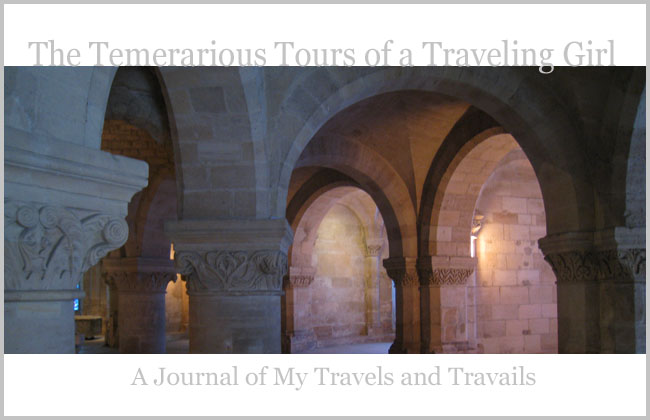 Facade of St. Denis.
Facade of St. Denis.
Partly because the basilica has received less attention than its more famous counterpart across the city, the piers of the church are blackened from centuries of candle smoke and incense, intensifying the already imposing Gothic architecture. The church is filled with stained glass, most of it reconstructed following the destruction of the French Revolution.

Thirteenth century altar.

As important to history and art history as the architecture of the church are the graves of many of the kings and queens of France.

Royal monuments.

 While the actual remains from some of the tombs have been lost, many of the memorials remain, providing a visual history of royal France. In the crypt under the high altar are the remains of the very early medieval church, including the original stone chapel.
While the actual remains from some of the tombs have been lost, many of the memorials remain, providing a visual history of royal France. In the crypt under the high altar are the remains of the very early medieval church, including the original stone chapel. 
Crypt of St. Denis.


The basilica also contains sarcophagi from the Merovingian period, simple, rough structures sculpted from stone.

Merovingian sarcophagus.

Archaeological remains of the earliest foundations of the church.
St. Denis serves as the resting place for such figures as Charles of Anjou, Henri II and his wife, Catherine d’Medici, some of France’s earliest kings, and holds the memorial (and dubious remains) of Louis XVI and Marie Antionette.

In the evening, we decided to visit the Latin Quarter, so named because of the university located there since the Middle Ages. The students spoke Latin, even outside the University, thus the name of the area, the Quartier Latin. The Latin Quarter is now home to many shops and restaurants, and is still a popular area for students. At a small hole-in-the-wall restaurant, we ordered pizzas, made from scratch and served hot, folded over and wrapped in paper for dinner. For dessert, we sought out Amorino, a famous gelaterie in Paris.

The gelato at Amorino!
By the time we reached the store, it had begun to rain, but the discomfort of being wet was soon assuaged when we saw the colorful, delicious spread of gelato laid out before us. I chose to try the amarena, a vanilla gelato with cherries, the caffé, and a rich, dark, 71% Ecuadorian chocolate. The gelato looked phenomenal and tasted even better! After such an amazing dessert, I could have been content for the rest of the night, but as we made our way back to the hotel along the Seine, now in a drizzly rain, I received amazing views of a number of Paris’ most famous landmarks, multiplied in their beauty by the contrast with the dark sky and the reflection of the light off the wet pavement.
After such an amazing dessert, I could have been content for the rest of the night, but as we made our way back to the hotel along the Seine, now in a drizzly rain, I received amazing views of a number of Paris’ most famous landmarks, multiplied in their beauty by the contrast with the dark sky and the reflection of the light off the wet pavement.
The Eiffel tower from the Seine.

















 In the few feet below the windows, gilded ornamental Gothic columns and arches decorate the walls against a backdrop of blue and red.
In the few feet below the windows, gilded ornamental Gothic columns and arches decorate the walls against a backdrop of blue and red.  At the rear of the chapel, a rose window filled with more glass punctuates the room, below which a vibrantly painted and richly gilded painting depicts Christ enthroned.
At the rear of the chapel, a rose window filled with more glass punctuates the room, below which a vibrantly painted and richly gilded painting depicts Christ enthroned.


 Like the Upper Chapel, the ceiling of the lower space approximates an exaggerated night sky, this time more pertinent to the viewer because the height difference has been reduced.
Like the Upper Chapel, the ceiling of the lower space approximates an exaggerated night sky, this time more pertinent to the viewer because the height difference has been reduced. 
 The combined effect of the two spaces is overwhelming and inspiring.
The combined effect of the two spaces is overwhelming and inspiring. 




 Beautiful - Madonna of the Rocks by Leonardo.
Beautiful - Madonna of the Rocks by Leonardo.









 View of the Eiffel tower from the Louvre, just as the tower began to sparkle at dusk.
View of the Eiffel tower from the Louvre, just as the tower began to sparkle at dusk.